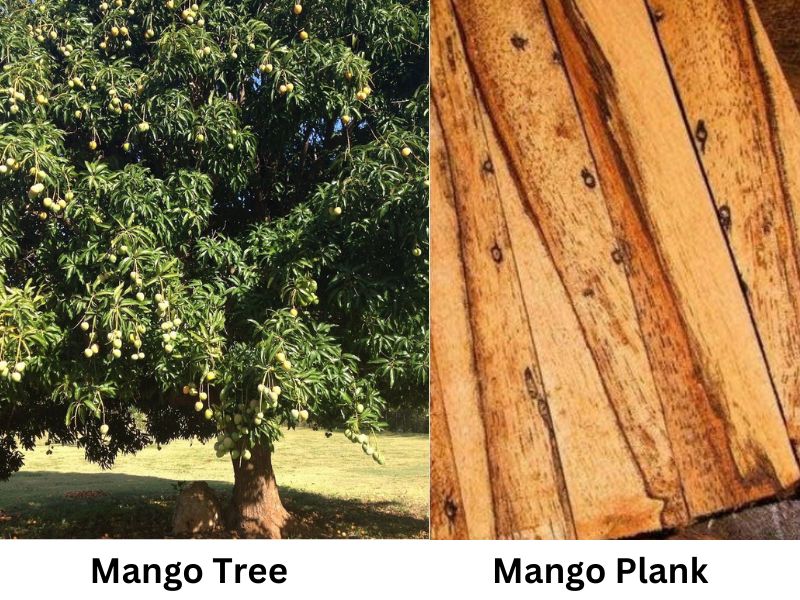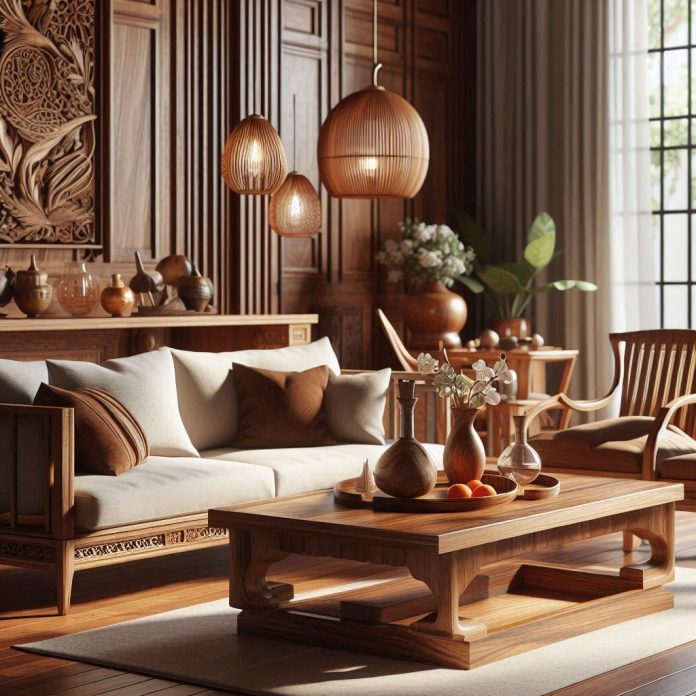Everything You Need to Know About Mango Wood Furniture
Last Updated on August 31, 2024 by SierraLivingConcepts
What is Mango wood
We get Mango wood from the tree that produces Mango aka the king of fruit. Mango trees are native to East Asia and especially to India, Bangladesh, and Myanmar. It is also cultivated in Kenya and China and is found in warmer parts like Florida, California, and Hawaii in the US. Belonging to the Anacardiaceae family, it is an evergreen tree.
Why is solid Mango wood a preferred choice for making furniture
Mango wood is an excellent choice for furniture making because it is hardwood and has a dense grain pattern making it strong and durable. Moreover, the mango tree has a high speed of growth and takes a maximum of 15 years only to reach full maturity.

Once the tree’s fruit-bearing capacity reduces, it is cut down. As the growth rate is fast and the productivity span is less, it can be replenished quickly and this makes it sustainable. It grows up to 80-100 feet (24-30 meters) and can have a crown of 12 feet.
Why select Mango wood for furniture
Opting for mango wood for furniture has many benefits and should be considered because of its:
1. Durability:
Being hardwood mango wood furniture is durable and does not wear out quickly. It ages beautifully and hence mango wood furniture lasts longer.
2. Hardness:
With a hardness rating of 1,120 pounds-force on the Janka scale, Mango wood products will be highly resilient.
3. Strength:
With an Average dry weight of 42 lbs/ft3 (675 kg/m3), mango wood is quite strong.
4. Workability:
Mango wood boasts fine and dense grains and a texture that is medium to coarse. Despite its rigidity, the wood is quite flexible, resilient, and easy to work with tools. This makes it pliable enough for woodworking and can be delicately carved and shaped.
5. Aesthetics:
Its heartwood is generally light golden brown in color but sometimes it can be yellow, black, or pink and this variation in colors gives you a truly one-of-a-kind furniture piece. It retains its high luster for a longer time compared to other hardwood. The straight or interlocked grains of the timber exude a very pleasing look to mango wood furniture.
6. Sustainable:
Mango trees grow faster and mature in a shorter span of time compared to many other hardwoods and are replaced immediately with a new plant once it is chopped down. It creates a sustainable cycle of plantation and keeps deforestation and soil erosion at bay.
7. Affordability:
Mango wood can be procured easily and does not require much processing after being felled. It can also be directly made into furniture and this reduces cost. Further, no special tools are required to work on it making it affordable.
8. Low maintenance:
Mango wood furniture can be easily maintained at home without any professional help.
How to maintain mango wood furniture
Taking care of mango wood furniture ascertains that it can be passed on to generations.
1. Though mango wood cannot hold water, a little spillage won’t harm it if wiped immediately. This will also retain the stain on the furniture and keep it looking new.
2. To keep the furniture looking new and lustrous, you can polish it when signs of wear appear. Polishing also makes its unique grains stand out.
3. Wipe it with a soft, damp cloth and use a solution of soapy water to clean it, however, avoid using any chemical cleaners.
4. Keep the furniture away from direct sunlight or other sources of heat to avoid discoloration.
Related Post: Everything You Need to Know About Mahogany Wood Furniture


